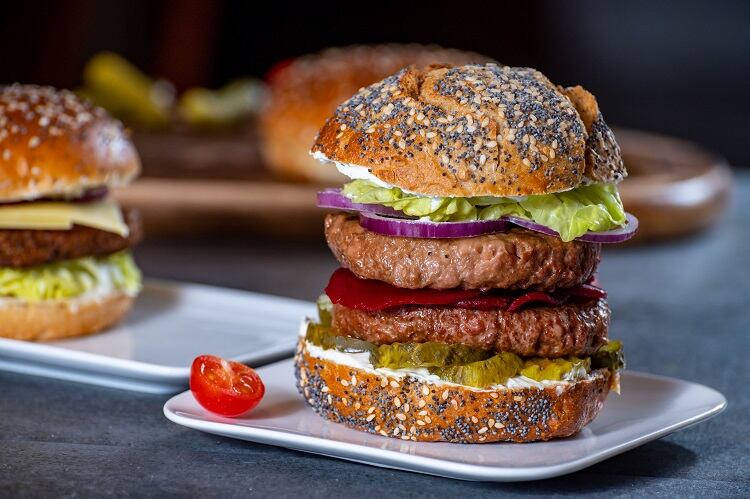Chr. Hansen is buoyant with its financial results for the year ending 31 August 2022. Total revenue amounted to €1.21bn, marking 13% growth compared to last year’s €1.07bn.
According to CEO Mauricio Graber, the company has delivered a ‘solid’ financial performance, despite a ‘volatile’ macroeconomic and geopolitical environment.
Organic growth was 9% in 2021/22, 7% of which was driven by volume growth. The implementation of price increases – to reflect inflationary pressures – can be attributed to 2% of total organic growth, which the company reports had a favourable impact in the second half of the year.
Impact of geopolitical environment in Europe
Chr. Hansen’s EMEA business was responsible for 37% of total revenue in 2021/22. Organic growth was 10%, while revenue increased by 8%. However, organic growth was negatively impacted by Russia, where Chr. Hansen scaled down operations, explained CFO Lise Mortensen.
The ingredients supplier was keen to defend its margins against ‘unprecedented’ input cost inflation and costs related to challenges in the supply chain.
“Already before Russia invaded Ukraine, we saw challenges in the supply chain and inflation starting. Already at that point in time, we started to focus on that and implement price increases,” Mortensen told this publication.
Following Russia’s invasion of Ukraine, these challenges ‘intensified’. Chr. Hansen took the decision to reduce its activities in Russia to basic food ingredients only. “We support very basic products within food and health,” the CFO explained, adding that its work in Russia is not implicated in sanctions. “We have decided not to disrupt very basic food chains to feed the civil population of Russia.”
From a logistical perspective, continuing to work even scaled-down operations in Russia has proved challenging. It has also impacted the company’s Russian business.
“We will be donating all profits from the Russia business to organisations supporting Ukraine, because we don’t want to profit from it.”
HMOs and Plant Health show ‘significant’ growth
Across the company, Food Cultures & Enzymes organic growth was 7%, mainly driven by volume but with a positive impact from pricing. Health & Nutrition organic growth was 14%, driven by volume.
The Lighthouses – made up of Bioprotection, Fermented Plant Bases, Plant Health, and human milk oligosaccharides (HMOs) – delivered 14% organic growth combined. These focus areas, Mortensen explained, are expected to grow faster than Chr. Hansen’s ‘core’ business areas.
“Lighthouses are core to our strategy, in terms of innovation and where we want to go, and they should be businesses that grow faster than our core business. And as a portfolio, they did.”
The company chooses to measure their performance as a portfolio, rather than as individual businesses, but could reveal that some Lighthouses experienced more ‘modest’ growth than others.
“In an environment like this, with macroeconomic uncertainty and unprecedented inflation, products like Bioprotection [ingredients which inhibit spoilage and protect against contamination] is growing at a more moderate level than it would have in more stable and growing economies,” explained the CFO.
However, over the last year, HMOs and Plant Health has grown ‘significantly’, ‘pulling up growth’ so that overall, the Lighthouses portfolio grew 14% – compared to 9% for the core business.
Cheese production up, fermented milk demand down
In Chr. Hansen’s Food Cultures & Enzymes business, revenue for the year 2021/22 amounted to €762m, representing a 9% increase compared to €700m last year. Organic growth was 7% driven by volume, while the impact from pricing was approximately 2%.
According to the company’s own estimates, the global production of cheese grew slightly this last year, driven by North America, while end markets for fermented milk remained impacted by weakened demand in China and Latin America compared to last year.
Overall, dairy delivered ‘solid’ growth, supported by ‘solid momentum’ in cheese, pricing initiatives, and projects supporting production efficiencies, while bioprotective solutions showed modest growth, noted the company.
“Food & Beverages delivered strong growth driven by meat and beverage applications, including a strong momentum in bioprotective solutions.”
Next year’s outlook
Looking into 2022/23, Chr. Hansen aims to deliver ‘solid’ organic revenue and EBIT growth.
More specifically, organic revenue is expected to be in the range of 7-10%, with revenue predicted to be positively impacted by approximately 5% from exchange rates.
According to the company, expected growth is composed of a positive impact from ongoing price adjustments, growth in lighthouses, and successful execution of the project pipeline in the core businesses, including expansion of the market for bacterial solutions which provide customers the opportunity for production improvements.
According to CEO Graber, the company will ‘continue to adapt’ to a changing business environment, in both the realm of ingredients and for its manufacturing customer base.
“[We] aim to deliver solid organic revenue and EBIT growth in 2022/23 as we progress on our strategic ambition to differentiate as a bioscience company focused on microbial and fermentation technology platforms.”





